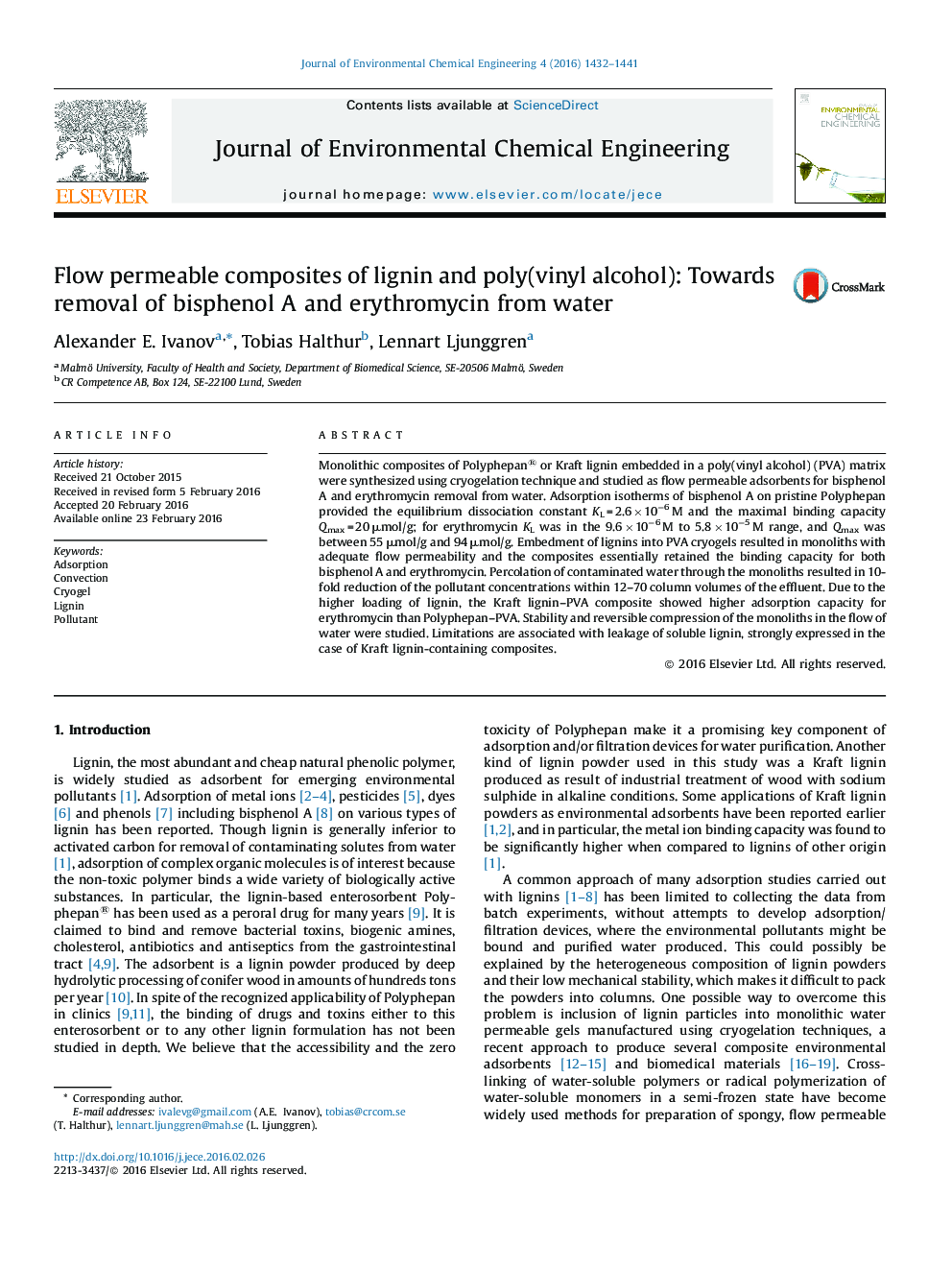| کد مقاله | کد نشریه | سال انتشار | مقاله انگلیسی | نسخه تمام متن |
|---|---|---|---|---|
| 221626 | 464263 | 2016 | 10 صفحه PDF | دانلود رایگان |
Monolithic composites of Polyphepan® or Kraft lignin embedded in a poly(vinyl alcohol) (PVA) matrix were synthesized using cryogelation technique and studied as flow permeable adsorbents for bisphenol A and erythromycin removal from water. Adsorption isotherms of bisphenol A on pristine Polyphepan provided the equilibrium dissociation constant KL = 2.6 × 10−6 M and the maximal binding capacity Qmax = 20 μmol/g; for erythromycin KL was in the 9.6 × 10−6 M to 5.8 × 10−5 M range, and Qmax was between 55 μmol/g and 94 μmol/g. Embedment of lignins into PVA cryogels resulted in monoliths with adequate flow permeability and the composites essentially retained the binding capacity for both bisphenol A and erythromycin. Percolation of contaminated water through the monoliths resulted in 10-fold reduction of the pollutant concentrations within 12–70 column volumes of the effluent. Due to the higher loading of lignin, the Kraft lignin–PVA composite showed higher adsorption capacity for erythromycin than Polyphepan–PVA. Stability and reversible compression of the monoliths in the flow of water were studied. Limitations are associated with leakage of soluble lignin, strongly expressed in the case of Kraft lignin-containing composites.
Figure optionsDownload as PowerPoint slide
Journal: Journal of Environmental Chemical Engineering - Volume 4, Issue 2, June 2016, Pages 1432–1441
